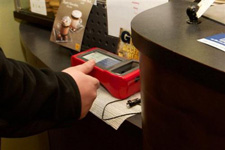It appears that Russian President Vladimir Putin doesn’t like his car. Tired of seeing Russian officials being carted about in Mercedes and BMWs, Mr. Putin ordered that a Russian domestic limousine be designed to replace them. Unfortunately, according to the Moscow Times, Mr. Putin apparently didn’t much care for the Zil-4112P that Russian car maker Zil came up with, and told them to have another go. Seeing a chance to get in on the action, car rivals GAZ and Marussia Motors are jumping into the game with Marussia and CarDesign.ru teaming up for a public competition to find “A car for the President.”
During the Cold War, Soviet luxury cars were nothing to write home about – except to express disbelief. The limousines that chauffeured the likes of Brezhnev and Kosygin were massive, ugly creations with gearboxes like coal scuttles, the turning radius of a container ship and huge engines that, paradoxically, provided hardly any power.
Two decades after the fall of communism, CarDesign.ru with Marussia Motors are using their “A car for the President” competition to put those days behind them with a call for a completely different model, and have released images of the entrants’ concepts
For those who are used to competition concepts showing cars that defy gravity, violate the laws of physics or are simply impossible to get into, the proposals for the Russian President’s future runabout do seem a bit on the conservative side, with many of them looking like tweaked Cadillacs and Bentleys. This isn’t surprising, since the competition rules are very specific about the basics of the cars. They have to fall into three classes – limousine, minivan or SUV – they must be front engined, rear-wheel drive, fit inside a specific set of dimensions and “stand on a par with competitors from Mercedes-Benz, Rolls-Royce, Bentley, etc.”
The rules also recommend starting with current Russian models and going on from there. Given this and the fact that the target demographic are heads of state who have their offices in the Kremlin, it's small wonder that they look more like something for going to a summit meeting rather than tearing up the track on the weekend.
According to CarDesign.ru, the competition received 40 entries from students and professionals and over 80 amateur entries with some from abroad. The winner of “A car for the President” will receive cash prizes plus a chance to work on developing the actual cars. The concepts are currently being reviewed by a jury of car experts and Marussia Motors.
The results will be announced May 1.












